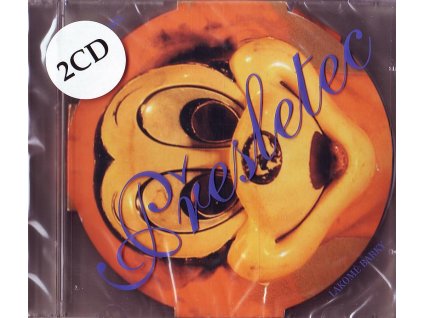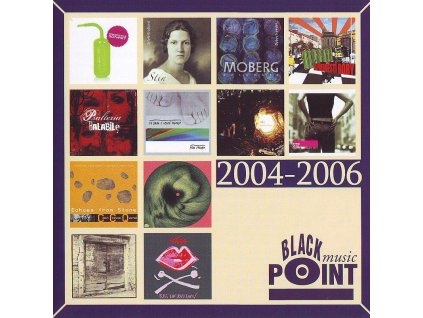NIKL PETR A LAKOMÉ BARKY - Nebojím se smrtihlava - CD
Kód: BP 0153-2Související produkty
Detailní popis produktu
Vpravdě excelentní záležitost připravil pro letošní podzim výtvarník, divadelník a performer Petr Nikl s dětským souborem Lakomé Barky. Kolekce písniček, které složil a otextoval, má v sobě něco z ducha dětských říkanek, něco z bláznovství pábitelských pouličních divadelníků, něco z uměleckých dobrodruhů bez hranic. Nikl, který mimo jiné připravil jako hlavní výtvarník českou expozici světové výstavy Expo 2005, zpívá ne nepodobně byvšímu vedoucímu souboru Vltava Robertu Nebřenskému. Aranžérsky a instrumentálně je album velice nápadité, Nikl využívá hudební nástroje neokoukaně a nápaditě. Pohádkově neskutečná atmosféra písniček je podbarvována jemnými pavučinami hudby jakoby vypadlé z kapsy Oldřicha Janoty, Pavla Richtera nebo skupiny Činna. Na desce hostují "new age"manželé Havlovi, jazzman Franta Kop a další významné osobnosti té části uměleckého světa, která zachraňuje pověst české hudby v zahraničí. Obal je – jak jinak u samorostlého originálního výtvarníka – rovněž zážitkem. V klasickém CDboxu je složena maska-smrtihlav, která zároveň tvoří kapsu na CD a na „točíky“. Co to je? Překvapení od Petra Nikla, který tvrdí: „Každý si rád hraje. Proto je dobré dát lidem do desky něco, s čím by si mohli hrát…“
Petr Nikl je znám především jako výtvarník a zakládající člen skupiny Tvrdohlaví. Během let si vytvořil nejen nezaměnitelný umělecký rukopis, ale také rozšířil své aktivity do akčních vod performance a hudby. Ostatně, není to tak překvapující – už v 80. letech založil divadlo Mehedaha, „pokusnou laboratoř pro míšení i těch zdánlivě nejprotikladnějších prvků“. Nikla vždy bavilo pronikat do neobvyklých či dokonce neprobádaných zákoutí umění. A jeho zásadní výstava Hnízda her (v pražském Rudolfinu v roce 2000) už svým názvem prozrazovala autorovo ústřední téma – hledačství neomšelých spojení a akcí s všezastřešujícím tématem hry. „Výstava prolamuje představy o tom, co je a jak funguje galerie, jak vypadá a jak je možné prezentovat (vystavit i přiblížit) současné umění,“ napsal tehdy do Lidových novin Jiří Hůla.
„Každý si rád hraje. Chci dávat lidem něco, s čím by si mohli hrát…“ říká Petr Nikl.

CD „I Don´t Fear a Dead-Head“ by Petr Nikl
Petr Nikl in known as an artist and drama expert before all although he uses also music and sound in his performances. In his age of forty he published a debut album I Don´t Fear a Dead´s Head with the ensemble of Lakomé Barky. He does really not care about transfering interest on his glory reached in one branch to another one as it is the practise of the TV weather men/women singing in musicals or painting Karel Gott.
This time Nikl, who never keeps an exactly limited medium, has chosen a song form. And it does not matter at all he is not a musician. For in his case the perfect interpretation according to traditional rules is not important. Nikl´s wailing singing does not correspond with them which however does not mean that the album is bad. Rather the opposite, it presents one of the most original recordings because it abouds in unusual imagination. It offers a perceptive listener another view in an individual world of the Nikl´s fanthasy that is as distinctive as in case of Carroll in Alice´s world. Actually, the album is not only a collection of ideas, it is carried off. Nikl as another non-musician Brian Eno, pioneer of ambient, managed surrounding himself by sensitive co-workers who perfectly fitted into his world whether it is the ensemble of Lakomé Barky formed of Klecany (a small town near Prague, transl. note) mothers and their children which solo singer Blanka Laurychova participated in music creation and as an author, and also Irena and Vojtěch Havel playing the cello and viola da gamba or a jazz saxophonist František Kop. To change songs performed by Lakomé Barky with those Nikl recorded on his own or with support of the Havels (he already co-operated in the Mehedaha theatre with) was a happy idea. Thanks that idea the album reached its diversity. The sound part excellently corresponds with the poetic texts. However, Nikl does not offer only trifles like „Zlatí hadi zlatě kadí, nepoznáš, co je had a co né, je to záhadné“ (transl. Golden snakes gold incense, you can´t recognize wha´re snakes, it´s so misterious) or „Už jsme doma dva, já mám doma lva“ (transl. Already we are two at home, I´ve got a lion at my home). The opening song Slow Birds has an atmosphere of haik. Actually there are not missing rougher pictures as a fledgling lying at the wall in Vetřelec (Invador) that „evokes of minute model monsters of empty trunks“… Nikl is playful in poetry but not infantile and he does not watch the world through pink glasses.
Petr Nikl a Lakomé Barky: Nebojím se smrtihlava (I Don´t Fear a Dead-Head)
___________________________________________________________________________________________________________
Review by Pavel Slabý:
Petr Nikl´s performance is mostly connected with art or theatre and often with projection of the both. Anyway, in his production a visual part plays a dominant role and so it is in his music performances. To publish his songs on CD where that component is missing was a step into the unknown. Fortunately, a fairly new dimension was created that demonstrates Nikl´s musicality much more significantly than live-performance, and it succeeded. The album I DON´T FEAR A DEAD´S HEAD (Black Point, 2004, 43:19) perharps speaks more to the listener who already has an experience with Nikl´s performances, but on the other side it explicitly makes space for own imagination. Finally, you can taste here in details the texts and explore always new delicacies in his rhymes.
In the recording Nikl´s solo entrances and songs with girls and mothers´ ensamble of Lakomé Barky are parallelly changing. Both the parts then have their specific poeticity that is often less or more dissolving. Lightly spirit of parablues have the opening Pomalí ptáci (Slow Birds) with onomatopoetic bassclarinet of František Kop. Actually, the song Brouk (A Bug) with oscilating vibrations of the viola da gamba and violoncello played by Irena and Vojtěch Havel are even bluesier. Those compositions are contrastly inset by the unambiguous „hit“ (and indisputedly the best known Nikl´s rhyme) Zlatí hadi zlatě kadí (Golden Snakes Gold Incense) where the author shows his sense for synthesis of the childish sight and intelectual trifle. Here thanks to the co-authorship of Blanka Laurychová a melody line is strengthened that culminates in another rhyme of Lev (Lion). However, the similar paradigm there is also in the Petr´s solo tune of Čůrám (I Am Pee-peeing) where the hopping infantile theme is mixed with a strange melancholy. Vetřelec (Invador) with the confessed inspiration of Philip Glass on the contrary impresses a bit paradoxically to be less minimalistic than the following diminutively composed Kámen (Stone) where Laurychová proves again her sense for tender structuralism. Absolutely as a pearl there are rending and creaky Sáčky (Plastic Bags) with a hyperdramatic accompaniment of Mr. and Mrs. Havel. Nikl evokes and reflects here existencial atmosphere of lifeless subjects´ „living“ on the rubbish heap of the world and he touches metaphysical aspects of the existence.
It is a very mature work with respect to the conception where the Nikl´s talent for playing, poetic humour as well as sight into the childish and mature all-embracing peace in all its tricks, joys and sadness is demonstrated. The whole opus may be fully appreciated after listening to it for several times, especially thanks to preciously well thought-out sound direction of Pavel K. Hejč that adds another dimension to the single parts. And the art is not de facto missing here at all for the cover on its own is a wonderful artefact composed as a moth´s masc and six rotation discs with texts and pictures you can play with. At the baptism on 1st December the last year in the Ponec theatre, admittedly the author explained a certain direction how to use it (it is partly to be found also in the booklet), but I can feel that there are not limitations for various use and fanthasy of the user.
Pavel Slabý
Doplňkové parametry
| Kategorie: | Alternativa |
|---|---|
| EAN: | 8595050215327 |
Buďte první, kdo napíše příspěvek k této položce.
Pouze registrovaní uživatelé mohou vkládat příspěvky. Prosím přihlaste se nebo se registrujte.
.png)





